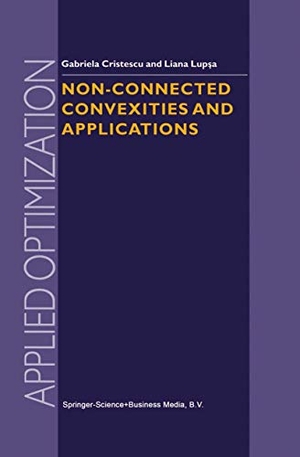Für statistische Zwecke und um bestmögliche Funktionalität zu bieten, speichert diese Website Cookies auf Ihrem Gerät. Das Speichern von Cookies kann in den Browser-Einstellungen deaktiviert werden. Wenn Sie die Website weiter nutzen, stimmen Sie der Verwendung von Cookies zu.
Cookie akzeptieren
L. Lupsa / G. Cristescu
Non-Connected Convexities and Applications
- Springer US
- 2014
- Taschenbuch
- 392 Seiten
- ISBN 9781461348818
Lectori salutem! The kind reader opens the book that its authors would have liked to read it themselves, but it was not written yet. Then, their only choice was to write this book, to fill a gap in the mathematicalliterature. The idea of convexity has appeared in the human mind since the antiquity and its fertility has led to a huge diversity of notions and of applications. A student intending a thoroughgoing study of convexity has the sensation of swimming into an ocean. It is due to two reasons: the first one is the great number of properties and applications of the classical convexity and second
Mehr
Weniger
zzgl. Versand
in Kürze